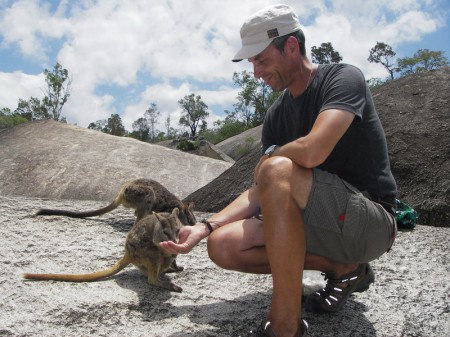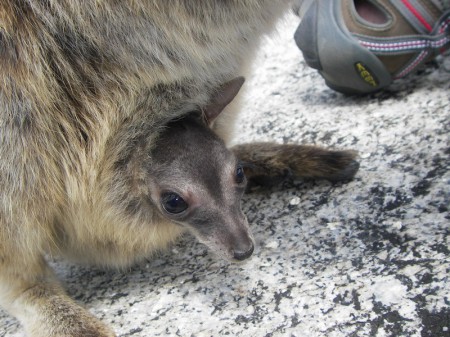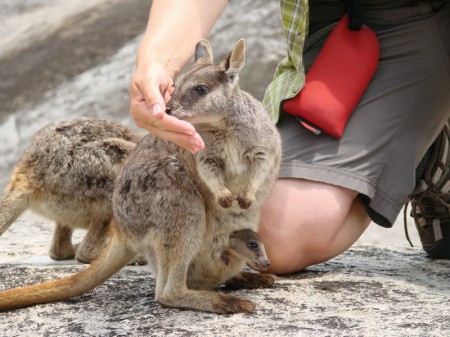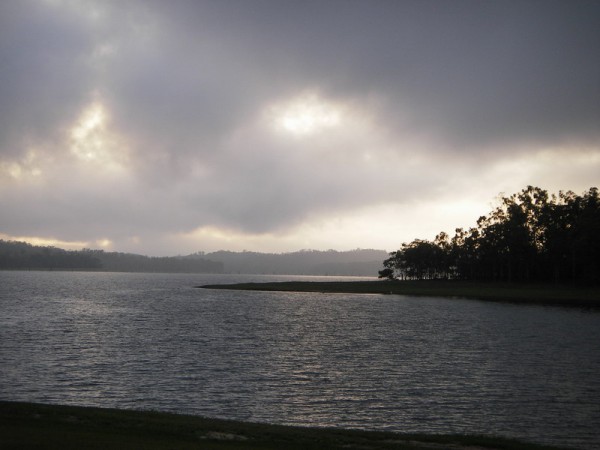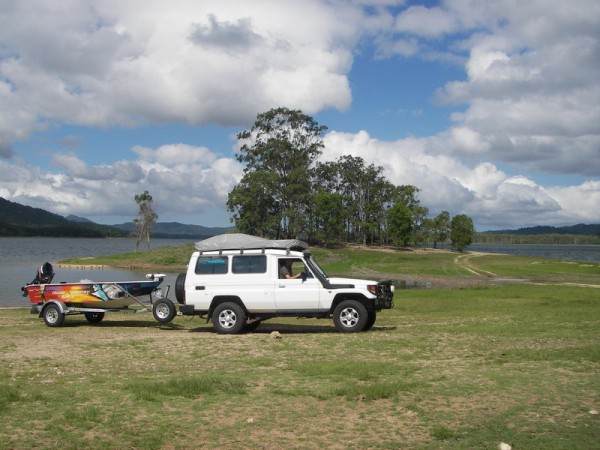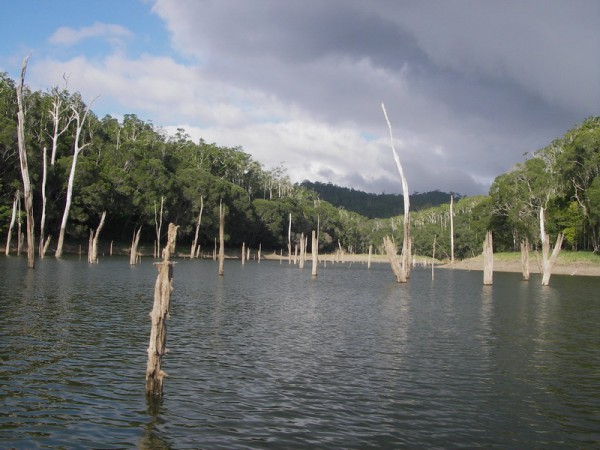Not just another lake
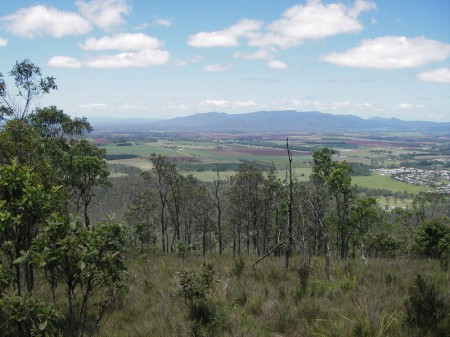
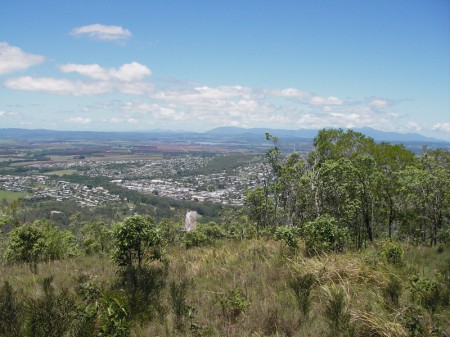 The Atherton Tableland, west of Cairns, has been another favorite of ours for many years. It shows all the features of the tropics, yet – being situated approximately 650m above sea level – is blessed with a very pleasante climate, much less hot and humid then the low lying coastal areas.
The Atherton Tableland, west of Cairns, has been another favorite of ours for many years. It shows all the features of the tropics, yet – being situated approximately 650m above sea level – is blessed with a very pleasante climate, much less hot and humid then the low lying coastal areas.
The deep red soil of the Tableland is very fertile indeed and the mild temperatures and a high annual rainfall allow the cultivation of mangoes, avocados, bananas, potatoes, peanuts and even tea and coffee, to name just a few. Malanda at the southern end of the Tableland is Queensland’s dairy farming centre and produces milk and other dairy products for the domestic market and for export.
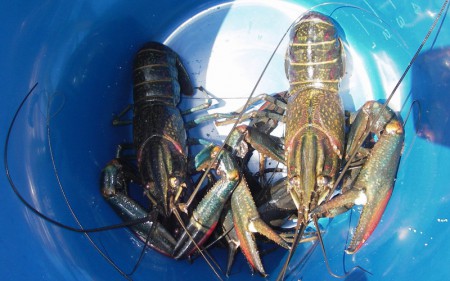 About 50 years ago, the Barron River was dammed and Lake Tinaroo was built to cater for an increasing demand for irrigation. As a byproduct, another outstanding freshwater fishery has been created and Lake Tinaroo is famous for the sheer size of its Barramundi. Sooty Grunter are also common and Red Claw Crayfish can be caught in good numbers.
About 50 years ago, the Barron River was dammed and Lake Tinaroo was built to cater for an increasing demand for irrigation. As a byproduct, another outstanding freshwater fishery has been created and Lake Tinaroo is famous for the sheer size of its Barramundi. Sooty Grunter are also common and Red Claw Crayfish can be caught in good numbers.
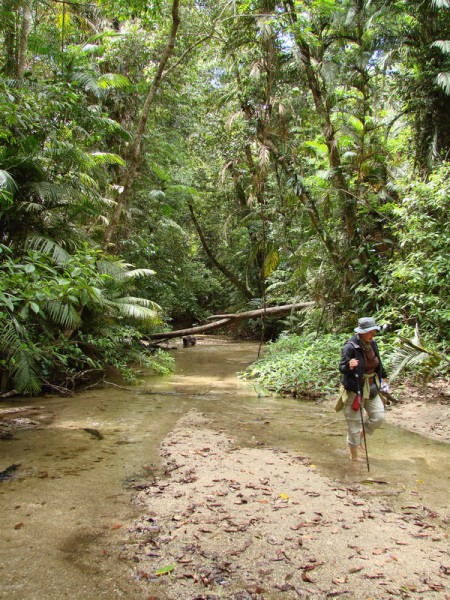 Large parts of the Tableland were once covered in rain forest. Farming and forestry both took their toll, but the remains still show a rich variety of plants and wildlife. On our daytrips we came across Platypus and tree kangaroos and – on the forest floor – Musky Rat Kangaroos and snakes crossed our path. The wet undergrowth proofed to be a paradise for leeches, which loved to attach themselves to our legs and feet. They were hard to get rid of and the small wounds kept on bleeding for some time.
Large parts of the Tableland were once covered in rain forest. Farming and forestry both took their toll, but the remains still show a rich variety of plants and wildlife. On our daytrips we came across Platypus and tree kangaroos and – on the forest floor – Musky Rat Kangaroos and snakes crossed our path. The wet undergrowth proofed to be a paradise for leeches, which loved to attach themselves to our legs and feet. They were hard to get rid of and the small wounds kept on bleeding for some time.
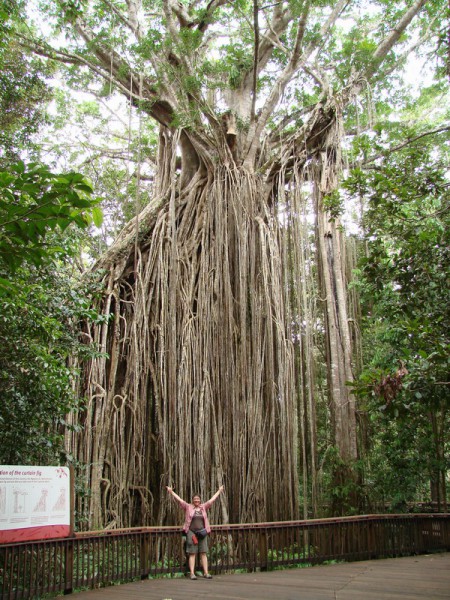 Remnants of the areas volcanic origin can be found in many places, the crater lakes probably being the best known feature. The two largest lakes, Lake Barrine and Eacham, are surrounded by rain forest and walking trails lead around them. On our walks, we saw Archer Fish, Jungle Perch, eels and dozens of Saw-shelled Turtles in the clear water. Many of the crater lakes have no surface connection to other waterways and therefore show a unique water fauna with subspecies that can only be found here. Massive strangler fig trees are a highlight of the Tableland forests. These giants provide shelter and food for many other species and their maze of roots resembles organ pipes. Strangler figs start their life high up in the tree canopy as a little seed on another tree. Growing bigger, they send roots down to the ground to get more nutrients and water and while getting larger and larger, they eventually strangle their host.
Remnants of the areas volcanic origin can be found in many places, the crater lakes probably being the best known feature. The two largest lakes, Lake Barrine and Eacham, are surrounded by rain forest and walking trails lead around them. On our walks, we saw Archer Fish, Jungle Perch, eels and dozens of Saw-shelled Turtles in the clear water. Many of the crater lakes have no surface connection to other waterways and therefore show a unique water fauna with subspecies that can only be found here. Massive strangler fig trees are a highlight of the Tableland forests. These giants provide shelter and food for many other species and their maze of roots resembles organ pipes. Strangler figs start their life high up in the tree canopy as a little seed on another tree. Growing bigger, they send roots down to the ground to get more nutrients and water and while getting larger and larger, they eventually strangle their host.
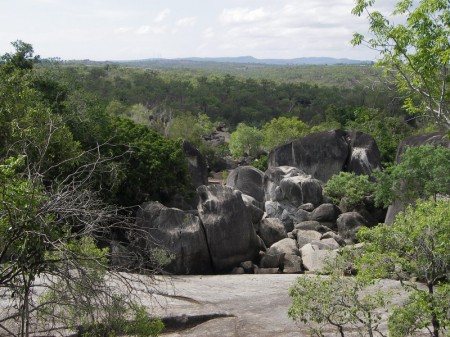 Granite Gorge, near Mareeba, is home to wild rock wallabies. Large granite boulders and a permanent spring seem like an oasis in the middle of dry, open eucalypt forest. Access to the area is supervised and the wallabies are used to humans. Even females with their joeys showed no sign of fear and came very close to get their share of a special marsupial treat, available from the visitors centre.
Granite Gorge, near Mareeba, is home to wild rock wallabies. Large granite boulders and a permanent spring seem like an oasis in the middle of dry, open eucalypt forest. Access to the area is supervised and the wallabies are used to humans. Even females with their joeys showed no sign of fear and came very close to get their share of a special marsupial treat, available from the visitors centre.
The small townships on the Tableland are all quite charming, every one of them with its very own character. Yungaburra features a Swiss restaurant; we had heard of it down south and just had to go there and see what it is all about. Nick Crameri, owner and chef of award winning Nick’s Restaurant for many years, welcomed us like old friends and treated us to a traditional homemade Swiss bratwurst and cabbage (Surchruut). Our meal was delicious and browsing through Nick’s guest books with comments in many languages, drawings and even poems, made by guests from all over the world, was entertaining and fascinating. Nick is also running a pizzeria and the pizza we had on our next visit was by far the best we’ve ever tasted. His pizzaiola is from Italy and oh boy, she knows her stuff.
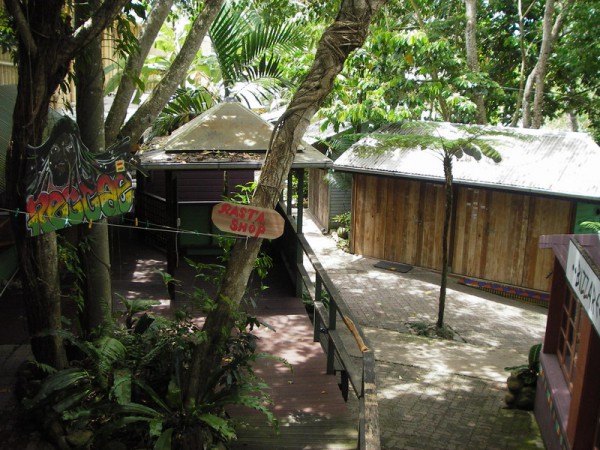 We love Kuranda, despite the fact that it is a well known tourist attraction and gets often very busy during the week. The little village in the mountains has a very special charm and the colorful locals and their arts and crafts set it apart from the main stream. We were looking forward to being back and were slightly disappointed of what we found. The old market looked a little run down and was almost deserted with only a handful of stalls remaining. At some stage the focus had obviously shifted to the main street, were a lot of flashy new shops attract huge busloads of visitors.
We love Kuranda, despite the fact that it is a well known tourist attraction and gets often very busy during the week. The little village in the mountains has a very special charm and the colorful locals and their arts and crafts set it apart from the main stream. We were looking forward to being back and were slightly disappointed of what we found. The old market looked a little run down and was almost deserted with only a handful of stalls remaining. At some stage the focus had obviously shifted to the main street, were a lot of flashy new shops attract huge busloads of visitors. 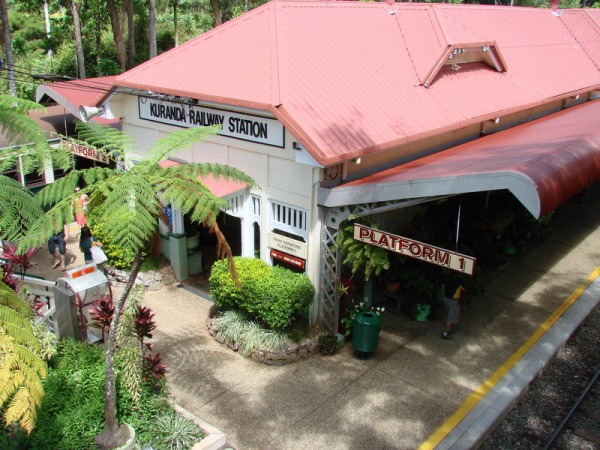 The location of the village is magic and a walk down to the river and into the surrounding forest was still worthwhile, but for us the unique attraction of the village has faded. Luckily, one of Kuranda’s icons, its railway station, hasn’t changed at all. The old buildings are in great shape and the place looks more like a lush green plant nursery than a train station. At the time of our visit a train with old carriages was awaiting departure and we had the opportunity to have a look inside. Beautiful, comfortable looking leather seats, dark wood panels and polished brass fittings created an atmosphere of grandeur of days gone by.
The location of the village is magic and a walk down to the river and into the surrounding forest was still worthwhile, but for us the unique attraction of the village has faded. Luckily, one of Kuranda’s icons, its railway station, hasn’t changed at all. The old buildings are in great shape and the place looks more like a lush green plant nursery than a train station. At the time of our visit a train with old carriages was awaiting departure and we had the opportunity to have a look inside. Beautiful, comfortable looking leather seats, dark wood panels and polished brass fittings created an atmosphere of grandeur of days gone by.
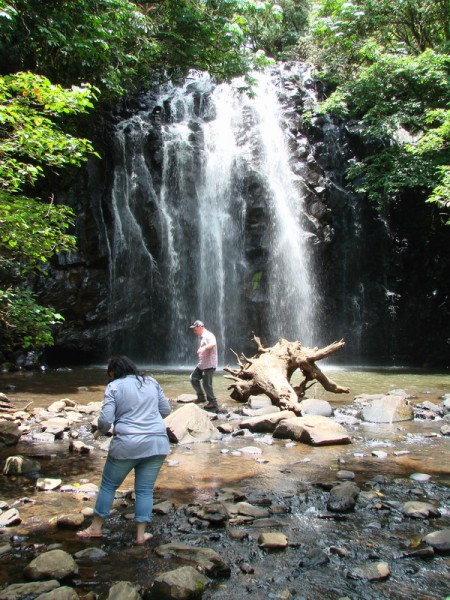 About 30km south of Atherton, around Milla Milla and at the very edge of the Tableland, many rivers and creeks plunge down into the coastal lowland, creating waterfalls of serene beauty. What a pleasure to take a refreshing swim in one of the pools below or to stand under the fall itself and have one’s back massaged by the force of the down pour.
About 30km south of Atherton, around Milla Milla and at the very edge of the Tableland, many rivers and creeks plunge down into the coastal lowland, creating waterfalls of serene beauty. What a pleasure to take a refreshing swim in one of the pools below or to stand under the fall itself and have one’s back massaged by the force of the down pour.
Every now and then while on the Tableland, we saw burn offs. At night the fires in the distance looked spectacular, while during the day all that remained was smoke and blackened hill sides. Privat land owners and authorities maintain the land by regularly and deliberately setting fire to reduce the amount of dry grass, leave litter and dead wood. Reducing the material that fuels fires, helps minimizing the risk of huge fires which are difficult to control and which may cause severe damage to the environment and to infrastructure. Regular, small fires generate much less heat and most trees and many other plants survive. Just days after a fire, the gum trees start to grow new leaves and the black soil turns into a bright green sea of grass and herbs. For kangaroos, wallabies and many other animals, this is a time of plenty.
The scenery and diversity of the Atherton Tableland were not the only reasons why we wanted to go there again. You may have guessed it; the possibility of some outstanding fishing was another major draw card. The eastern and the western shoreline of Lake Tinaroo are very different, with forest adjacent to the east and farmland to the west. The lake features many arms and bays and large areas on its eastern side are covered in death trees, providing food and cover for fish. Thanks to an abundance of Bony Bream, the Barramundi grow fast and big. Tinaroo is not the easiest lake to fish though and notorious for patchy fishing. But if the conditions are right, the fishing fires.
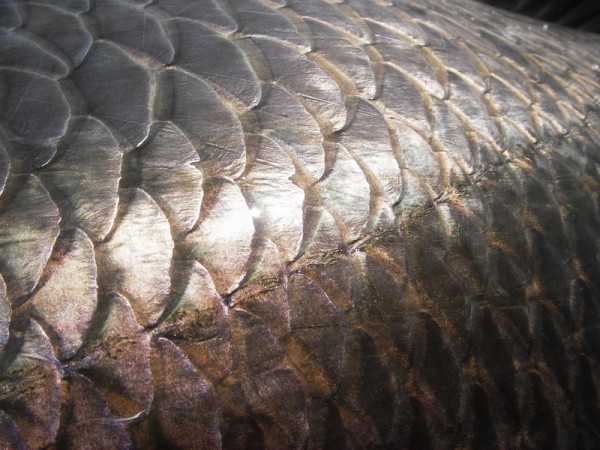 More than 10 years ago, during our last visit, we met Jack Leighton, a local and one of the pioneers of Barra dam fishing. He knows the lake like the back of his hands and has caught more big ones than he cares to count. We fished with Jack back in 2001 and had a great time with this humble man. And we caught a 45lbs Barramundi, our first Barra ever. No wonder we wanted to see Jack again and may be spend a day on the lake together. We learned that he has retired from guiding since our last visit and has sold his boat. He still enjoys going down to the lake just below his house and catching a nice fish on a lure or a fly.
More than 10 years ago, during our last visit, we met Jack Leighton, a local and one of the pioneers of Barra dam fishing. He knows the lake like the back of his hands and has caught more big ones than he cares to count. We fished with Jack back in 2001 and had a great time with this humble man. And we caught a 45lbs Barramundi, our first Barra ever. No wonder we wanted to see Jack again and may be spend a day on the lake together. We learned that he has retired from guiding since our last visit and has sold his boat. He still enjoys going down to the lake just below his house and catching a nice fish on a lure or a fly.
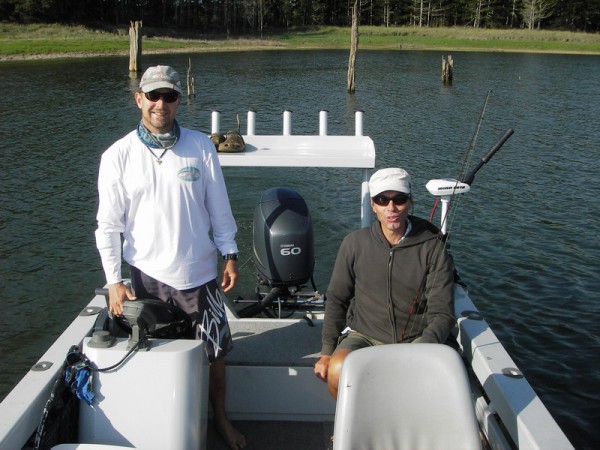 Ian Kucurs, a keen young fly fisher and experienced guide, has taken over and is guiding people from all over the world to a fish of a lifetime. www.tinaroobarra.com We spent many days on the water and, while fishing with Ian and on our own, we were able to land some beautiful fish. The really big ones kept quiet though and we couldn’t catch a meter fish this time. Ian was great company, showed us many of his prime spots and we even learned new ways to tie knots and how to make our own twisted leaders. Already, this has proven to be very useful indeed. And we were pleased to learn, that one of our most successful shallow water pike lures from back home, Storm’s Suspending Wildeye Swim Shad, is also one of Ian’s favorite Barra lures.
Ian Kucurs, a keen young fly fisher and experienced guide, has taken over and is guiding people from all over the world to a fish of a lifetime. www.tinaroobarra.com We spent many days on the water and, while fishing with Ian and on our own, we were able to land some beautiful fish. The really big ones kept quiet though and we couldn’t catch a meter fish this time. Ian was great company, showed us many of his prime spots and we even learned new ways to tie knots and how to make our own twisted leaders. Already, this has proven to be very useful indeed. And we were pleased to learn, that one of our most successful shallow water pike lures from back home, Storm’s Suspending Wildeye Swim Shad, is also one of Ian’s favorite Barra lures.
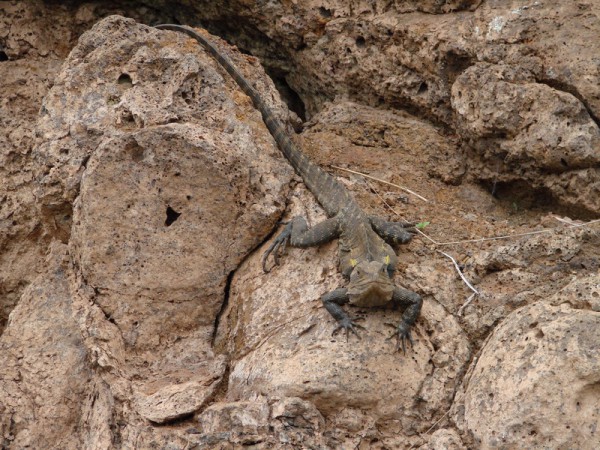 The wildlife on and around the lake is fantastic. Geese and ducks and other water fowl are usually around in good numbers, water dragons can be found sunbathing along the lake shore everywhere and large groups of wallabies feed on the lush grass growing right at the water’s edge. Pythons and tree kangaroos are a rarer sight, but not uncommon.
The wildlife on and around the lake is fantastic. Geese and ducks and other water fowl are usually around in good numbers, water dragons can be found sunbathing along the lake shore everywhere and large groups of wallabies feed on the lush grass growing right at the water’s edge. Pythons and tree kangaroos are a rarer sight, but not uncommon.
